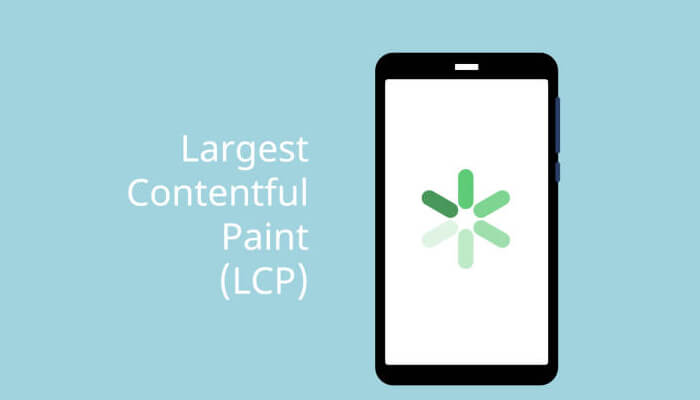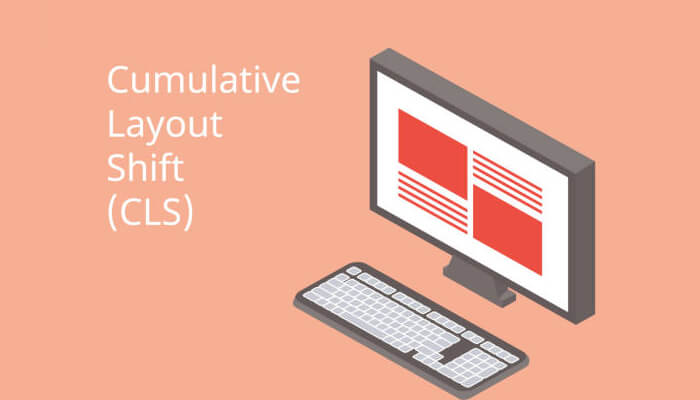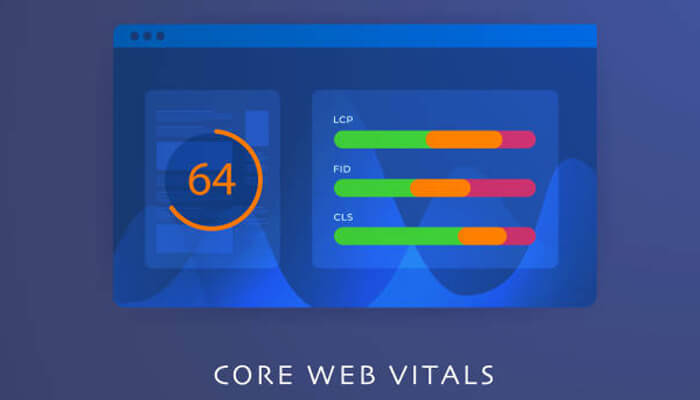As e-commerce continues to dominate the online marketplace, businesses must stay ahead of the game in terms of website optimization. One key factor that has emerged in recent years is the concept of Core Web Vitals. In 2020, Google established specific metrics for these vital website elements, providing e-commerce businesses with a more straightforward path to better website ranking. But what exactly are Core Web Vitals, and how can businesses optimize them for maximum impact? In this article, we’ll take a closer look at Core Web Vitals and share essential tools for optimizing them, so your e-commerce website can stay ahead of the competition.
Why Core Web Vitals are so important
1. Core Web Vitals impact your site’s Google search rankings
2. They are crucial for providing an excellent user experience
3. Optimizing Core Web Vitals can increase your site’s traffic and revenue
Optimizing Core Web Vitals is essential for online store owners and developers to provide an optimal user experience, rank higher on Google search results, and ultimately increase their revenue. These three core metrics – Largest Contentful Paint (LCP), First Input Delay (FID), and Cumulative Layout Shift (CLS) – are based on the speed of loading, interactivity, and visual presentation of your website.
By prioritizing these metrics, your website can provide customers with a smooth, responsive, and visually appealing experience. Don’t overlook Core Web Vitals while designing or optimizing your website, as they could be the difference between a good and a great user experience and ultimately impact your revenue.
What is Largest Contentful Paint (LCP)
Largest Contentful Paint (LCP) is a crucial metric that measures the loading time of a web page’s most significant content element, such as an image or text box. It is one of the critical components of Core Web Vitals, a set of metrics essential for providing a seamless user experience. Optimizing your website’s LCP can reduce page load times and improve the overall user experience, leading to increased customer retention and acquisition.
We at Perspective receive frequent requests to improve Core Web Vitals’ LCP. You can see below one example of optimization of the Largest Contentful Paint (LCP), which we did for one of our clients:
1. Largest Contentful Paint before optimization
2. Largest Contentful Paint after optimization
What are the most common causes of low Largest Contentful Paint:
1. slow server response time
2. non-optimized JS and CSS
3. slow resource load
4. slow rendering on the client side.
How to increase Largest Contentful Paint
We have created a small list of optimization methods, which are constantly applied in our work, and therefore we recommend the following:
1. Delete the JS code that is not in use and minimize the files in production mode.
2. It is better to write CSS rules in modules (blocks) so that the stylization of some selectors does not stop others. Also, we recommend avoiding making a long chain of selectors. All CSS files, or libraries to be tested, should be stored locally, not downloaded via CDN.
3. Compress the images for faster loading and use new formats. For example, convert JPEG to WebP, which is 1/3-size without losing quality.
4. We recommend using responsive images (link) to optimize images in terms of download speed and user experience. There is an important point here. The img tag has two critical attributes:
1. src – to indicate the original image source. Images from the src attribute are scanned and considered in the ranking by search engines, so it is necessary to specify the best-quality image here.
2. srcset – allows you to specify a variety of versions of the image. From the images in the srcset attribute, the browser selects an image to load and display depending on the screen size of the desktop devices or mobile devices it runs on.
5. we do not recommend adding loading=”lazy” in the <img> tag attribute.
Remove lazy attribute to increasing Largest Contentful Paint
What is Cumulative Layout Shift (CLS)
Cumulative Layout Shift (CLS) is a crucial visual stability metric that quantifies the extent of unexpected layout shifts during page load. It is measured by the sum of all layout shift scores that exceed a threshold of 0.1. Improving CLS has become a top priority for businesses as user experience takes center stage in modern web development. Therefore, it is no surprise that clients frequently request improvements to this key performance indicator.
What are the most common causes of poor Cumulative Layout Shift (CLS)
Visual stability indicators are critical for ensuring a smooth and seamless user experience. However, poor visual stability can be caused by several technical factors. Some common culprits include the sizing of image and multimedia files, GraphQL queries, and unoptimized carousels.
INCORRECT SIZING OF IMAGE AND MULTIMEDIA FILES
When images or multimedia files do not have a specified size, the browser cannot allocate the appropriate amount of space when the item is loaded. This can result in a page layout that is constantly shifting, causing a poor user experience.
UNOPTIMIZED GRAPHQL QUERIES
When loading images or GraphQL blocks on a Progressive Web App (PWA), failing to reserve space can cause the page to “jump” after loading. This can lead to poor layout shifts and negatively impact performance metrics.
UNOPTIMIZED CAROUSELS
An unoptimized carousel that uses non-smooth and non-combined animations can trigger a re-calculation of the page layout, resulting in poor Cumulative Layout Shift (CLS) scores. While a slight shift may be barely noticeable to the user, it can significantly impact the page’s overall layout change and visual stability.
How to improve visual stability indicator and Cumulative Layout Shift
USING PLACEHOLDERS
Implementing placeholders is a widely adopted technique to improve the perceived performance of a website. Placeholders serve as visual cues that indicate that the download is in progress and the site is functioning correctly. The most effective approach for images is setting the height and width attributes.
Using Placeholders to improve the performance score at Core Web Vitals
This strategy lets the browser reserve the necessary space for images before fully loading, preventing unexpected layout shifts. Here is an example of implementing this technique using the img tag.
<img data-src=”image.webp” width=”380″ height=”120″ alt=”image”>
By defining the height and width attributes, the browser can allocate space for the image and prevent the layout from shifting when the image loads. As a result, users will experience a smoother and more visually stable browsing experience.
FRONT-DASPLAY: SWAP
To achieve the optimal Cumulative Layout Shift (CLS) score, developers can utilize the font-display: swap property to display text in the system font before the custom font file has fully loaded. The font-face rule in the required CSS font file should specify the font file paths and include the font-display: swap property.
Here is an example of how to define the font-face rule with the font-display: swap property:
@font-face {Font-family: “Proxima Nova”;src: url(“../fonts/proximanova-regular.woff2”) format(“woff2”);font-display: swap;}
Using the font-display: swap property, the browser will immediately display text in the system font until the custom font file is fully loaded. This technique can prevent unexpected layout shifts and improve the visual stability of the page, resulting in a better user experience.
CSS TRANSFORM
The CSS transform feature is an influential tool developers can utilize to enhance their site’s performance and user experience. For example, using CSS transform can help to mitigate issues related to loading image carousels, resulting in a faster and more user-friendly browsing experience.
When optimizing the loading of CMS blocks (especially on PWA projects) via GraphQL HTML elements, setting CSS properties with a fixed height is recommended. This approach can help to prevent unexpected layout shifts and ensure a visually stable page after it loads.
By implementing these techniques, businesses can improve the Core Web Vitals score and provide a smoother, more enjoyable user experience. In one of our recent cases, we significantly improved the CLS score by adding the font-display: swap property in the CSS file, setting a minimum height, and optimizing font loading (@font-face).
1. ONLINE STORE BEFORE Core Web VITALS OPTIMIZATION
2. ONLINE STORE AFTER Core Web VITALS OPTIMIZATION
What is the First Input Delay (FID)?
First Input Delay (FID) is a critical metric that measures a website’s interactivity. First Input Delay measures how long a site takes to respond to a user’s first interaction with a page, such as clicking a button or typing in a form field.
Using FID in Magento 2
In Magento 2, many user interactions can affect the site’s FID, such as clicking on a live chat button, adding a product to the basket, or completing a purchase. If these interactions are not responsive and do not provide immediate feedback to the user, it can result in a slow and frustrating user experience.
To ensure optimal user experience, it is essential to achieve an FID score that is less than 100ms. This can be achieved through various optimization techniques, such as minimizing JavaScript execution time, optimizing third-party scripts, and optimizing server response time. By optimizing FID, businesses can provide a more responsive and engaging website that keeps users engaged and satisfied.
How to optimize First Input Delay
TASK DECOMPOSITION
A recommended approach to enhance First Input Delay (FID) is partitioning lengthier tasks into smaller, more manageable sub-tasks. Lengthy tasks can overburden the primary thread, obstructing the processing and execution of user input. Any code segment that impedes the flow for more than 50 milliseconds qualifies as a lengthy task.
Ascertaining FID necessitates conducting measurements under real-world conditions, as genuine user interaction with the web page is essential for obtaining precise measurements.
TEST IN REAL-LIFE CONDITIONS
To accurately measure First Input Delay (FID), it is recommended to employ specialized tools that gauge performance under real-world conditions. A few such tools include:
1. PageSpeed Insights Test;
2. Search Console (Core Web Vitals report);
3. Chrome User experience Report;
Since FID necessitates user interaction, conducting tests in a laboratory setting is not feasible. In contrast, field metrics capture real-world performance by analyzing user behavior. However, the Total Blocking Time (TBT), a metric that assesses the period between the First Contentful Paint (FCP) and Time to Interactive (TTI), can be measured in a laboratory setting and is well correlated with FID in field conditions. TBT is also adept at identifying interactivity-related problems. Consequently, any optimization that enhances TBT in a laboratory environment will also improve FID for users. Lighthouse is a tool that can measure TBT effectively.
ENABLE DOWNLOAD ON DEMAND
You can use third-party code to enable download on demand for web pages. For example, you can enable download on demand so that the banner at the bottom of the page or ad is displayed only when they scroll close to the view. The main idea is to download Web elements that provide the most significant value to users, not those that can be downloaded at the end of the line, as a priority.
OPTIMIZE JAVASCRIPT
To enhance website performance, it is crucial to eliminate any unnecessary JavaScript files. One recommended approach is to defer the download of JavaScript files until they are required. This technique initially enables the browser to obtain critical web elements such as HTML and CSS. Following this, the scripts can be evaluated, thus facilitating a faster loading time. Adopting this strategy is especially useful for websites with substantial JavaScript extensions, such as the Mega Menu extension utilized by many Magento stores. This technique allows website owners to streamline the loading process and provide a more efficient user experience. Therefore, removing unused JavaScript is a fundamental optimization technique that should be considered to boost website performance.
More indicators to improve Core Web Vitals
In addition to the three main Core Web vitals above, several supplemental metrics exist.
First Contentful Paint (FCP)
First Contentful Paint (FCP) is a valuable metric that helps measure the time taken for a page to display its initial image or text block. This metric includes the processing time for DNS requests, server requests, server-side operations, and DOM primary rendering. While factors like DNS and network speed are beyond our control, reducing the processing time for server-side tasks and optimizing the loading of styles and scripts can significantly impact performance. Specifically, Google recommends prioritizing the inclusion of only critical styles in the head section of the webpage and, if possible, using style tags instead of link tags to minimize unnecessary server requests.
To further enhance website performance, Google Analytics provides a wealth of information on user behavior and engagement. For instance, by using the User Timings report, website owners can monitor the duration of specific actions and events, including page loads, user interactions, and other custom events. This data can help identify areas of the website that require optimization and track the effectiveness of any changes made.
Speed Index Metric
While FCP measures the time for the first element to display, the Speed Index (SI) metric captures the overall loading speed of web pages by considering the time required for the page to become fully visible to the user. It provides a comprehensive overview of the page load performance and considers the effects of network speed and server processing time. By leveraging a combination of FCP and SI, site owners can obtain a comprehensive overview of website performance and take appropriate steps to enhance user experience.
SI considers various factors that impact webpage performance, including network speed, server processing time, and the size of resources being loaded. The metric calculates the visual completeness of a webpage at regular intervals during the loading process and assigns a score representing the page speed. The lower the SI score, the faster the page loads and the better the user experience.
To improve SI, web developers can use a variety of optimization techniques, including minimizing external resources such as CSS and JavaScript, reducing image sizes, and leveraging browser caching to speed up the loading of resources. By analyzing SI scores with tools like Google Analytics and WebPageTest, website owners can identify areas that require optimization and make changes to improve website performance. Ultimately, by improving website performance and enhancing user experience, website owners can improve engagement, increase conversions, and grow their businesses.
Interaction to Next Paint
Interaction to Next Paint (INP) is a critical metric that measures the time between a user’s interaction with the webpage and the display of a visual response. This metric is particularly relevant for pages that require frequent user interactions, such as social media platforms and e-commerce sites. INP provides valuable insights into the responsiveness of a webpage and helps identify areas that require optimization to improve user experience.
INP is calculated by selecting the most recent user interaction during the current webpage visit and measuring the time taken for the webpage to respond with a visual update. This update can include various changes, such as the appearance of a new image or text block, an element’s position or size adjustment, or the execution of a complex animation. By measuring the time between user interaction and visual response, INP can provide valuable insights into the perceived performance of a webpage and help identify areas that require optimization.
To improve INP, web developers can implement a range of optimization techniques, such as minimizing the use of JavaScript and reducing the size of images and videos. Additionally, utilizing modern web technologies such as the Intersection Observer API and Web Workers can help improve performance by offloading resource-intensive tasks and reducing the workload on the main thread.
Time to First Bite (TTFB)
Time to First Byte (TTFB) is a crucial metric for page performance. It represents the time the server takes to receive the first byte of data after a request has been sent. The TTFB value is influenced by various factors, such as network latency, server processing time, and the complexity of the website’s code. A lower TTFB value is desirable as it indicates faster loading times and a better user experience. The ideal response time for a website is between 250 to 350 milliseconds, while anything above 500 is considered a long response time and can negatively impact the website’s performance.
To improve TTFB values, website owners can use various tools and techniques. One such technique is query caching, storing frequently accessed data in a cache, allowing faster access and retrieval. Tools like Varnish can act as a caching layer between the server and the user, improving website speed and reducing server load. For PWA projects, service workers can be used to cache HTML content, which can be updated when the content changes, providing faster access to frequently accessed content.
For Magento projects, full-page caching can also improve TTFB values. Full-page caching allows the entire page to be cached, reducing the need for the server to run a lot of code and retrieve information from the database. With full-page caching enabled, the browser can read the page directly from the cache, leading to faster loading times and improved user experience.
Therefore, you should not make as many pages and blocks but reduce them as possible.
Tools recommended for Core Web Vitals audit
Lighthouse is a powerful web performance auditing tool that can help developers diagnose website speed and interactivity issues. It combines modern web technologies and best practices to provide in-depth website performance analysis and offers actionable optimization insights. By running Lighthouse audits, developers can quickly identify opportunities to improve site speed, interactivity, and other key metrics.
The Lighthouse report has several sections:
1. Site performance: analysis of site download speed
2. Features: describes how to speed up your site and improve performance.
3. Diagnosis: indicates what needs to be paid attention to and corrected
4. Progressive web program: detailed audit
5. Availability: section on how to improve UX design
6. Best practices: the best ways of reliable optimization of most sites
Before running an audit, you can use the Analyze page load button to adjust the audit level to suit your interests (Performance, SEO, Accessibility, etc.).
Your audit report will be displayed in the new window when the audit is started. It is also available for measurement on the PageSpeed Insights website.
Don’t forget, that the metrics of Core Web vitals will be taken over the last 28 days.
Conclusions
In conclusion, consider contacting our Core Web Vitals audit team to ensure a good user experience for your online shop. Although Core Web Vitals metrics may seem abstract, they make your site more user-friendly. Moreover, these metrics have a clear connection to the functionality of your site’s code, making them relatively easy to improve.
Based on our experience, optimizing these metrics can lead to fast improvements in ranking and conversion rates. By measuring Core Web Vitals, you can pinpoint areas for optimization and enhance the overall user experience of your website. So, don’t hesitate to reach out to the Core Web Vitals audit team and see the positive impact it can have on your online business!





